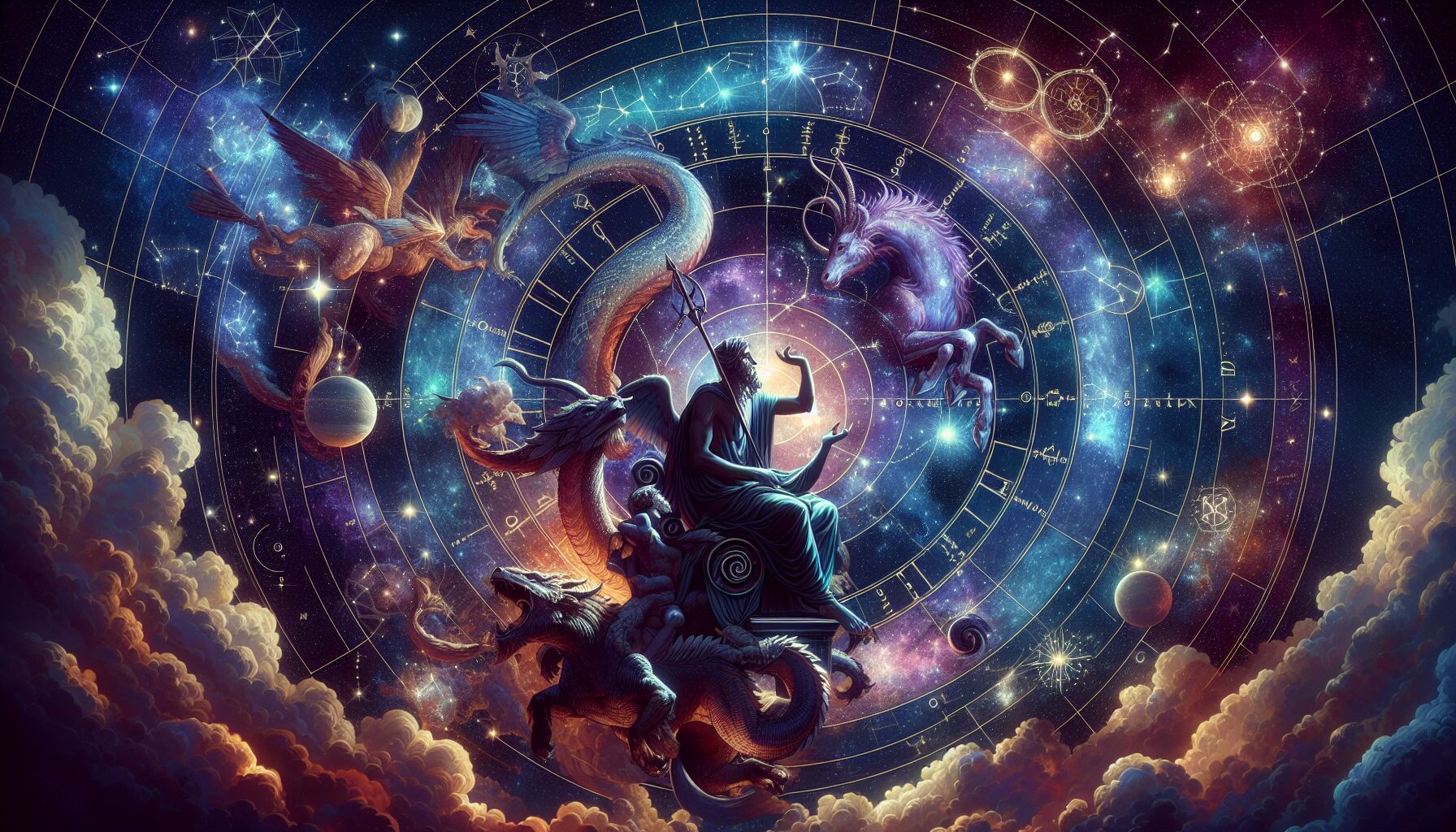The night sky has always been a source of wonder and mystery. As ancient civilizations gazed upwards, they saw more than celestial bodies; they saw sacred stories, legends, and myths etched into the vast cosmic canvas. The “Celestial Codex” reveals a fascinating intersection of mythology and astronomy, a dialogue between human imagination and the infinite universe.
The Dawning of Celestial Mapping
From the Greeks to the Egyptians, every civilization perceived the night sky as a grand tableau where mighty Gods, epic heroes, and legendary creatures roamed among the stars. According to Encyclopedia Britannica, the ancient Greeks were particularly instrumental in charting the sky, recognizing 48 constellations that vividly brought their mythology to life. Today, 88 official constellations are recognized by the International Astronomical Union.
Greek Mythology: Legends Among the Stars
Many constellations are directly tied to ancient Greek mythology:
- Orion: The mighty hunter Orion’s tragic tale is immortalized in a constellation that boasts Betelgeuse and Rigel, some of the brightest stars in our sky. Orion’s story of hubris and punishment unfolds beautifully across the heavens.
- Pleiades: Known as the seven sisters, the Pleiades are a cluster of stars also mentioned in Homer’s “The Odyssey”. They were said to be transformed into stars to escape the unwanted pursuit of Orion.
- Perseus: Representing the hero who slayed Medusa, Perseus is a prominent constellation that intertwines with other myths like that of Andromeda and Cassiopeia, weaving a stellar tapestry of adventures and aspirations.
Other Cultures, Other Stars
While Greek myths are prevalent, they are not exclusive. Cultures around the globe have mapped the stars with their own narratives:
- Chinese Astronomy: In China, star lore is intricately tied to their history and achievements. The Beidou (Big Dipper) was crucial for navigation and played a key role in ancient Chinese religion and mythology, representing the handle of the Celestial Emperor’s chariot.
- Indigenous Australian Astronomy: The Aboriginal peoples of Australia have one of the longest continuous scopes of sky-watching in human history. Constellations like the Emu in the Sky do not focus on stars, but rather the dark patches between them. It represents creation stories and is an integral part of cultural practices.
- Egyptian Sky Lore: The ancient Egyptians illustrated their cosmology through the movement of stars. The constellation Sopdet, associated with the star Sirius, was crucial for their calendar and linked to the prosperity brought by the annual flooding of the Nile.
The Modern Era: Science and Story
Advancements in technology and science have redefined our relationship with the stars. However, the myths remain as a cultural legacy, a reminder of humanity’s enduring curiosity about the cosmos. Carl Sagan famously said in “Cosmos”, “The cosmos is within us. We are made of star-stuff. We are a way for the universe to know itself.” This perspective harmonizes a scientific understanding of the universe with the mythological significance we have historically ascribed to it.
Enduring Influence
“We are all in the gutter, but some of us are looking at the stars.” — Oscar Wilde
The celestial myths endure not just in storytelling but in art, literature, and cultural expressions worldwide. They remind us of our shared heritage, one that transcends geographical boundaries and is rooted in the universal experience of looking skyward.
Conclusion: The Mythological Legacy
The night sky, a constant canvas of human imagination, continues to captivate us. As we advance in our scientific pursuits, the celestial codex remains a timeless bridge connecting us to our ancestors. These myths encapsulated in our stars remind us of the stories that define us and the universe we seek to understand. As humanity continues to explore outer space, the mythological legacy woven into the stars serves as both a reminder of our past and an inspiration for our future.
“`

Comments